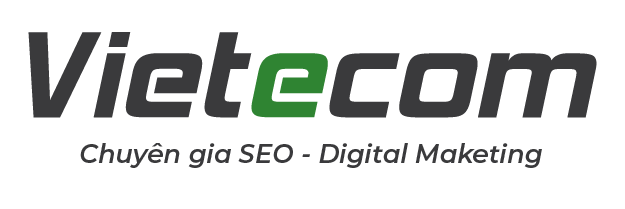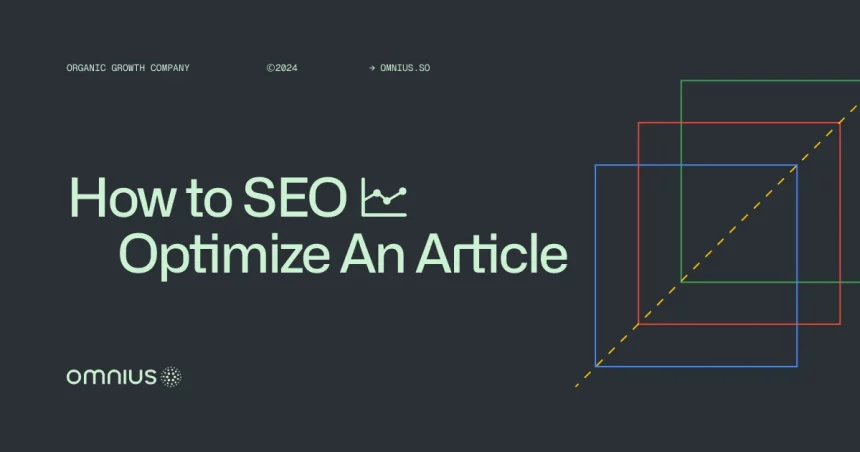Do you want your articles to rank higher in search engines?
Apart from quality content, it’s crucial to optimize articles for SEO and better ranking.
Remember, SEO is a long-term marketing strategy.
Even if it seems hard at first, you’re in the right place!
We’ve created a guide on how to SEO-optimize an article to help you build traffic faster and improve your lead generation within your articles.
Let’s master the art of writing not only for users but also for search engines!
What Is SEO Writing?
SEO writing is the technique of creating content that ranks higher on Google or other search engines for relevant keywords and provides relevant answers to the user’s queries.
This includes:
- Creating and fine-tuning your content to fit the keywords your audience searches.
- Ensuring your content helps out your readers.
- Making it easy for search engines to understand what your content is all about.
Search engines like Google use “spiders” to crawl and understand what your content is about.
If the content isn’t optimized for SEO, it might not be noticed by search engines and ranked for keywords you want it to be.
Research shows that the top 3 Google search results get 68.7% of all clicks.
Unoptimized content ranks far back in search results.
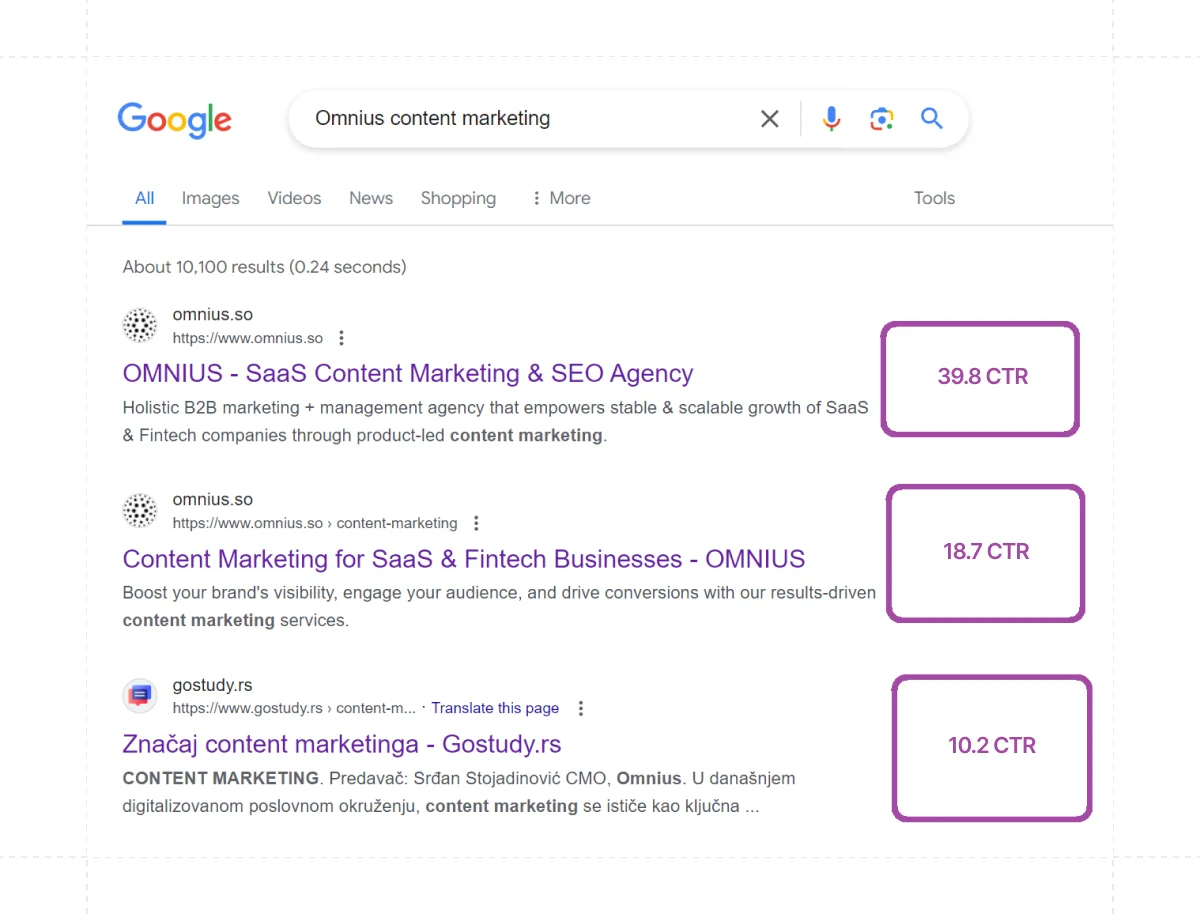
However, optimizing content is not only about optimizing articles.
It also includes the process of optimizing:
- Website architecture and performance.
- HTML code of the articles for search engines.
Let’s go through the process of optimizing the articles to help them rank better.
How to SEO Optimize an Article
This guide will teach you how to SEO-optimize articles to satisfy your readers and Google algorithms.
1. Identify Your Main Keyword
The main keyword is the primary term you wish to optimize your content for that users search for.
You must know how to conduct keyword research and select the best one for your content to satisfy the search intent.
Remember that popular(short-tail) keywords(e.g., project management) are harder to rank for in search engine results.
This is why you should:
- Choose keywords that are relevant to your niche and easy to rank for.
- Find keyword ideas by researching competitors’ websites and blogs to find potential gaps.
- Utilize keyword tools like Ahrefs, SemRush, or Google’s Keyword Planner to simplify the research process.
Let’s say our keyword is ‘’B2B Marketing.’’ Just type it down into Keyword Research Tool, in this case SemRush, and hit ‘’Search’’.
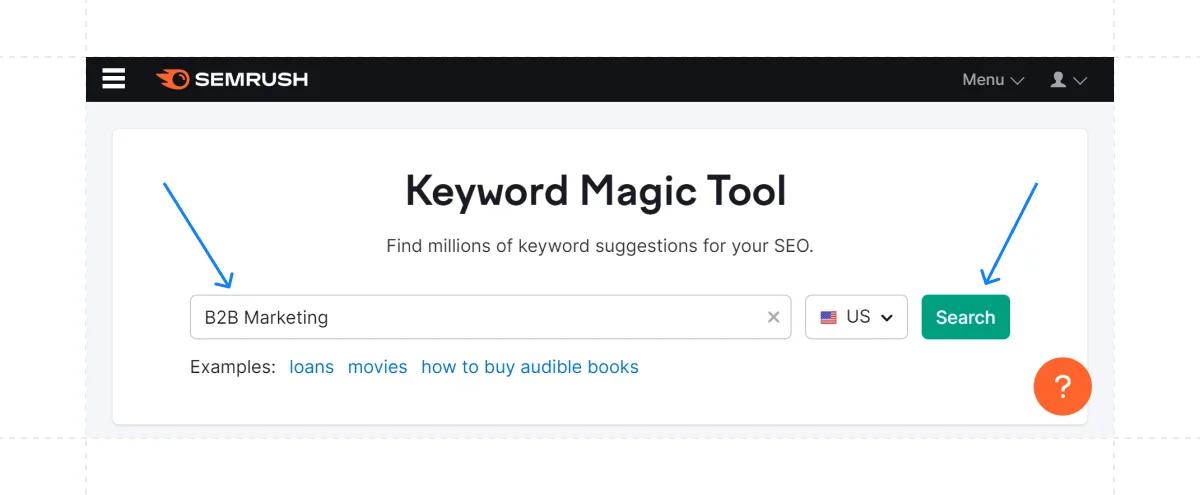
The tool will display keywords related to your main keyword.
Switch to the “Questions” tab.
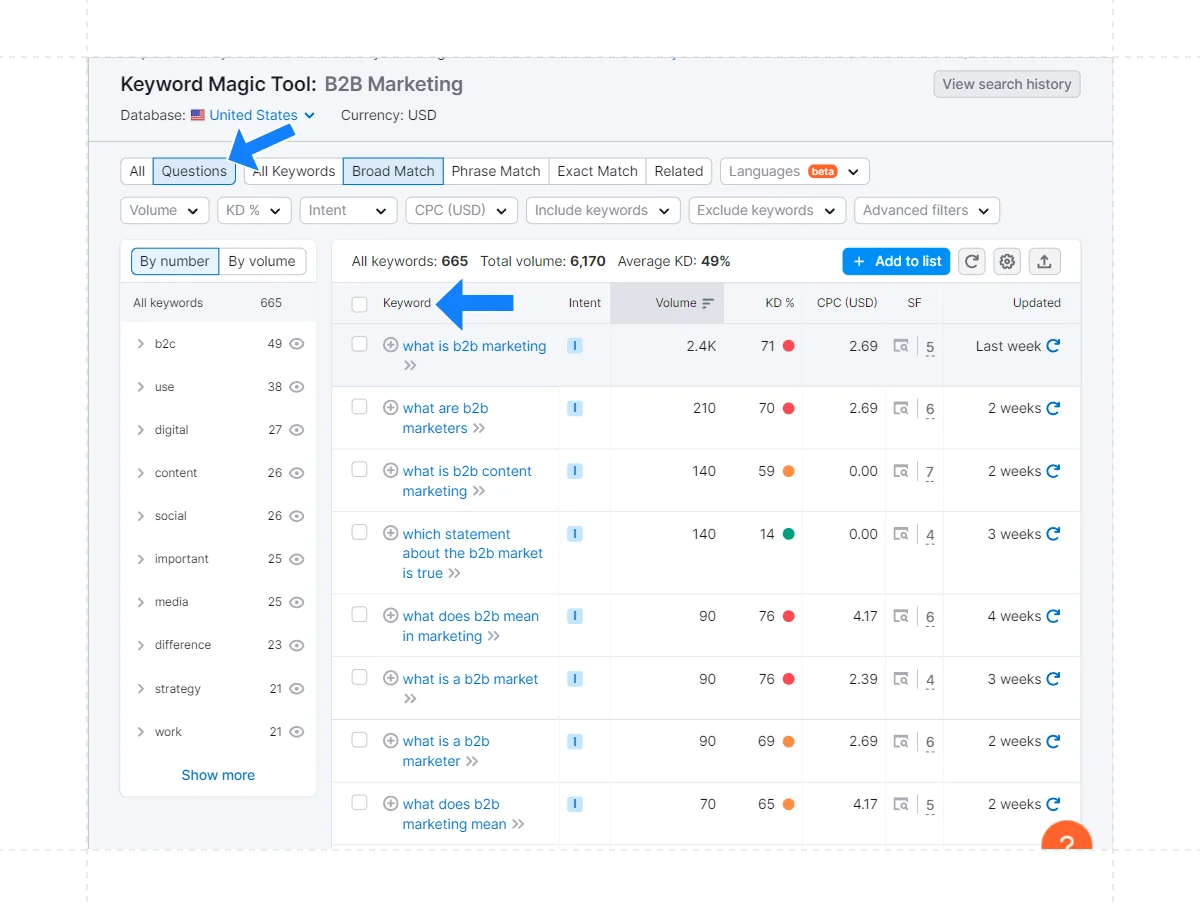
Here, you will get a large number of topic ideas.
Now, the question is – how do you choose your primary keyword?
Enter the most popular keyword(seed keyword), as it holds the greatest potential for driving traffic to your site.
Now, choose the “Broad match” keywords, and set the ’’Keyword Difficulty’’ (KD) to ‘’Easy’’.
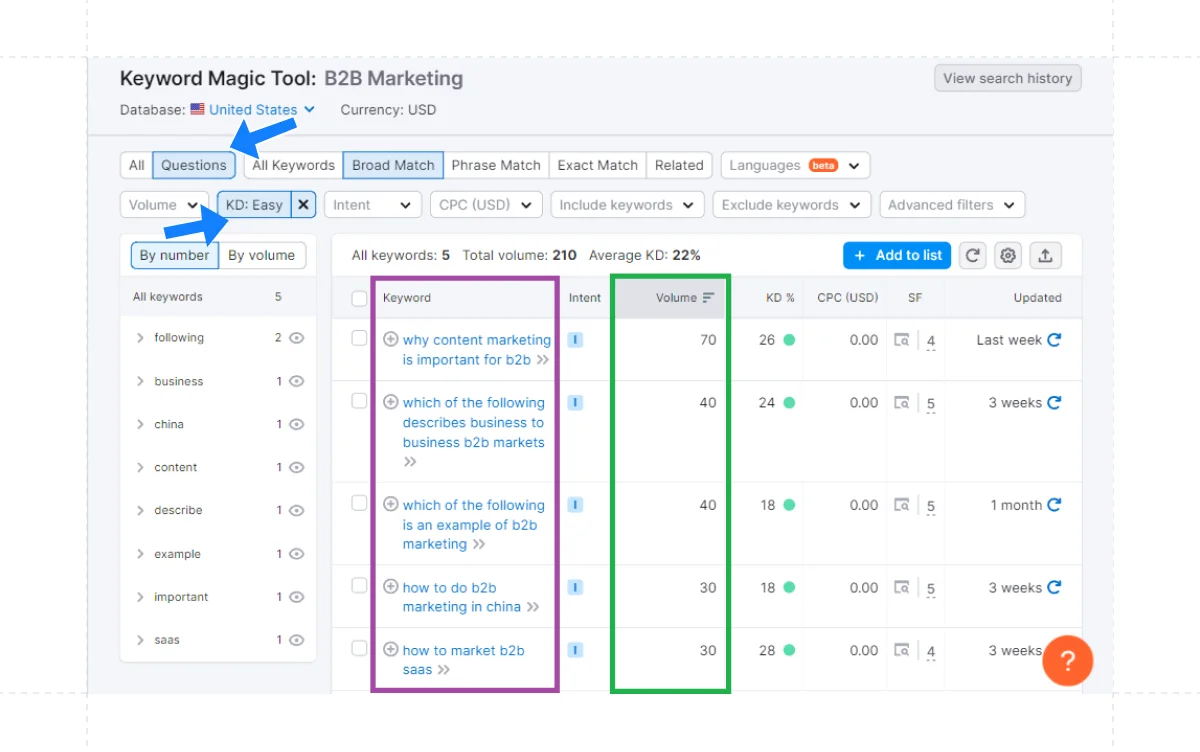
Now, you’ve got a list of keywords that are easier to rank for.
KD indicates how difficult it would be to rank organically in the top 10 search engine results.
Volume shows the average number of monthly searches.
Finally, aim for a mix of broad terms and specific long-tail keywords to take advantage of less competition and attract targeted website visitors.
2. Meet Search Intent
Once you’ve found your keywords, make sure to align content with search intent.
Search intent shows what people specifically search for behind the query.
SEOs typically categorize keywords into one of four search intent groups:
- Informational Intent – When users want to learn something.
- Transactional Intent – When they’re ready to buy something.
- Navigational Intent – They are looking for a specific section on the website.
- Commercial Intent – Consumers are looking to buy or educate themselves in order to buy.
But how do we narrow down what the searcher wants with his intent?
For example, the query “B2B Marketing” is informational, as searchers want to learn, not buy.
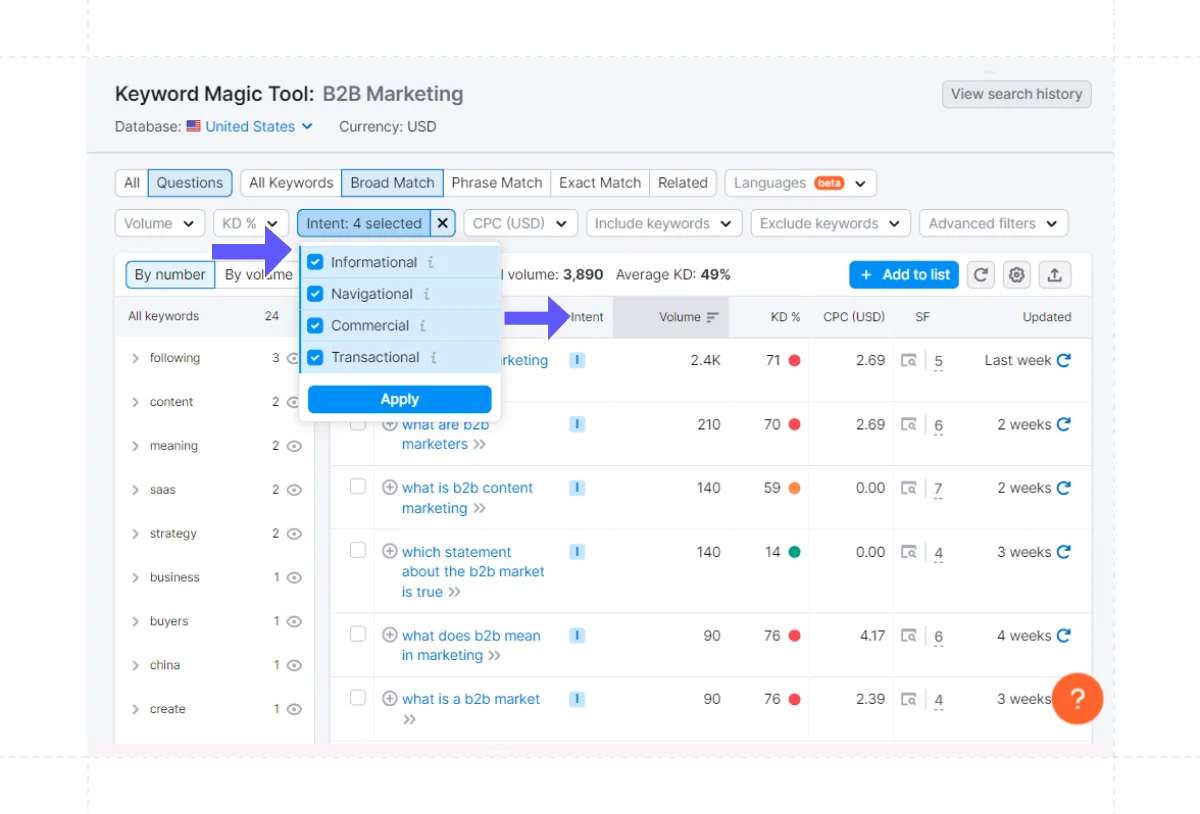
Here, you need to align your content:
- type,
- format, and
- angle.
1. Content type represents the kind of content showing up in search results, which typically falls into one of these categories:
- Blog post
- Video
- Product page
- Category page
- Landing page
2. Content format relates to the primary “format” of top-ranking pages, which is often seen in blog posts. Common formats include:
- “How-to” guides
- Step-by-step tutorials
- List posts
- Review articles
- Comparisons
3. Content angle is the unique selling point of top-ranking posts or pages and reveals what searchers prioritize in their search.
In our example, ‘’2024’’ is the dominating content angle because searchers want up-to-date recommendations.

Google’s helpful content guidelines state that Google is searching for ‘’substantial, complete, and relevant content.’’
This implies including all the information that searchers look for within their query.
Here are two methods for finding key subtopics:
- Visit the top-ranking pages – They can provide insights into what searchers expect to see for a specific topic.
- Perform a content Gap Analysis – This method helps you find common subtopics and key points by listing common keywords for analyzed pages.
3. Write an Engaging Blog Post Title
Titles tell your readers what they may expect from your article.
If your topic title is not properly covered and answered through content, you will have many dissatisfied visitors.
Here are key factors that can help you improve and optimize title tags:
- Place crucial information and the main keyword at the start of the Title tag.
- Use CTAs to give your potential visitor something to look forward to in addition to your page’s content.
- Ask questions to pique the audience’s interest and encourage them to visit your page.
- Include numbers as they can emphasize a point.
- Use variants and keep titles to an optimal 50-60 characters.
4. Create Your Article Outline
You’ve already come up with a great post title, now it’s time to define how you’ll structure your article and cover the topic.
An outline can help you organize your ideas based on your target keywords.
This provides space to determine the ideal placement for features such as:
- Specific questions
- Videos
- Statistics
- Quotes
- Internal and external links
An outline is an excellent place to compose each of your subtopics and sections.
Writing these during your outline can help you draft your blog more efficiently.
.webp.webp)
5. Craft Quality Content
Quality content is crucial for successful SEO writing.
Google’s core and spam update announced changes that will help reduce unhelpful content in Google Search by 40%.
So, without prioritizing quality, no level of optimization will boost your ranking.
This means the content you create should be:
- Organized – Use topic clusters to create linked articles. Create content with clear headings, bullet points, and concise paragraphs.
- Easy to Read – Always write for humans. Use simple and clear language that makes your content friendly and relatable.
- Unique and Fresh – Storytelling is like magic in web content writing. Use visual assets to make your content more interesting.
- Satisfying the Search Intent – Provide detailed answers that solve problems and meet user queries. You can try high-intent content to target the bottom of the funnel.
- Following Google’s E-E-A-T Guidelines – Boosting E-E-A-T enhances user trust and drives higher conversions and better user experience on a website.
Don’t be afraid to experiment and write from your own experience.
Showcase success stories of companies aiding other businesses, as readers find such content relatable.
6. Perform On-Page SEO
To improve your blog’s SEO and reach its full potential, you should also apply on-page SEO techniques.
This will help Google better understand your content and rank it more accurately.
Follow these tips to help you optimize the article:
- Incorporate your target keyword in the title tag to signal relevance to searchers and Google.
- Craft a compelling meta description to encourage clicks when your blog post appears in search results.
- Use short and descriptive URLs to give searchers a clear idea of your blog content.
- Utilize your target keyword in the H1 tag to enhance your page’s ranking potential.
- Integrate your target keywords naturally within the body content to demonstrate relevance to specific queries.
- Include links to relevant internal resources to enhance user experience and assist Google in navigating your site.
- Add alt text to images to optimize their visibility in Google Images search results.
Note: Utilize an on-page SEO checker to check if your blogs are properly optimized.
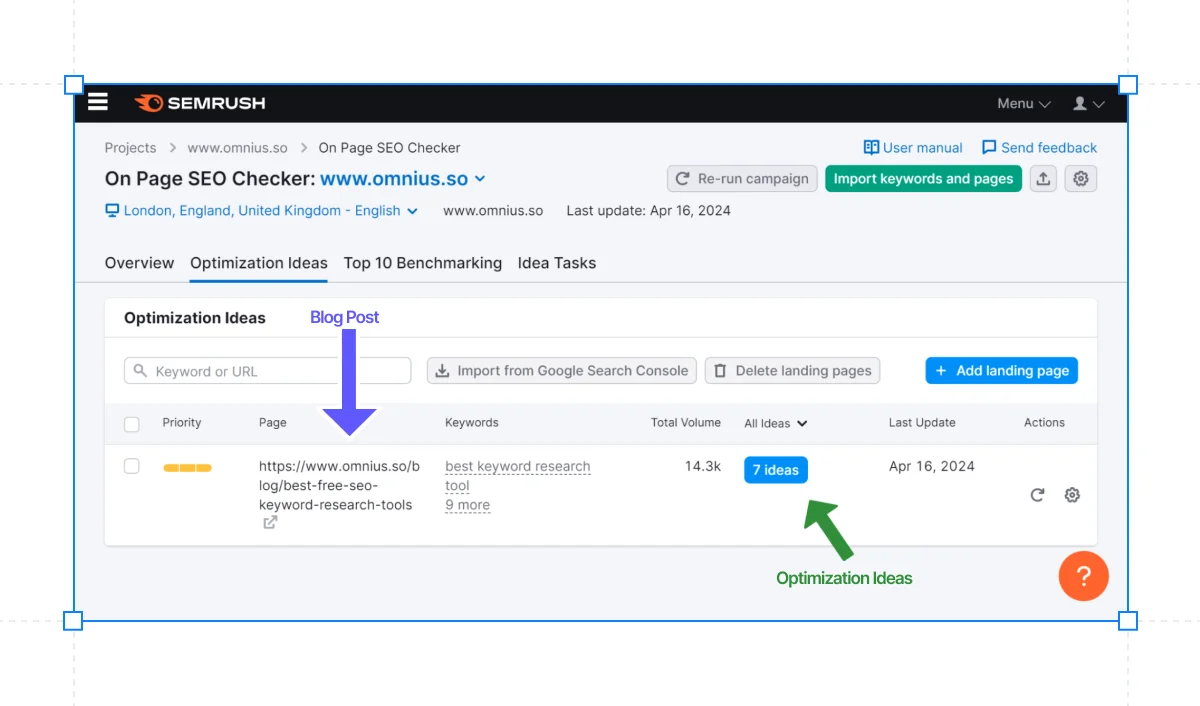
7. Keep an Eye on Technical SEO
If Google can’t read and list your blogs, all your SEO efforts go to waste.
Your blogs won’t show up in search results.
Let’s check the main factors of technical SEO you can improve:
- Page Speed – If your page loads slowly, people could give up on your website. Use PageSpeed Insights to check factors you can optimize to improve speed.
- Mobile-friendliness – Google’s mobile-first indexing requires your content is equivalent across mobile and desktop. Try Lighthouse to test your website response.
- Track Errors – Your page may not be indexed correctly because of numerous errors. Check the Index coverage status report to find out what stops tracking and indexing.
- Site Architecture – Craft friendly URLs, sitemaps, and internal links, which help search engines crawl and index your website.
- Images – Should be descriptive, have the right format, and the correct size and dimensions. This helps Google know what the image is about and index it.
8. Create Backlinks
A solid SEO plan should include a strong backlinking strategy.
This is especially important for blogs targeting competitive keywords.
One effective method is broken link building.
You find broken links on competitors’ sites and request those linking to them to link to your similar, functional blogs.
You can use a backlink analytics tool, enter the domain or URL of your competitor’s website, and select “Analyze.”
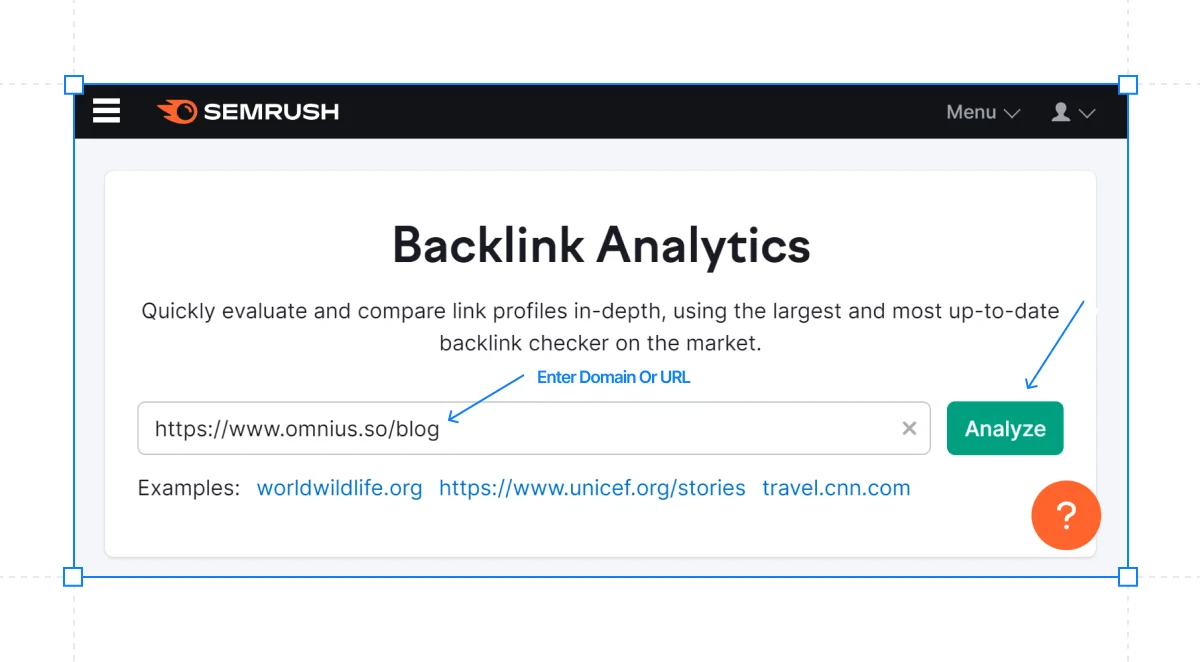
From there you wish to go to the “Indexed Pages” tab and select the “Broken Pages” box.
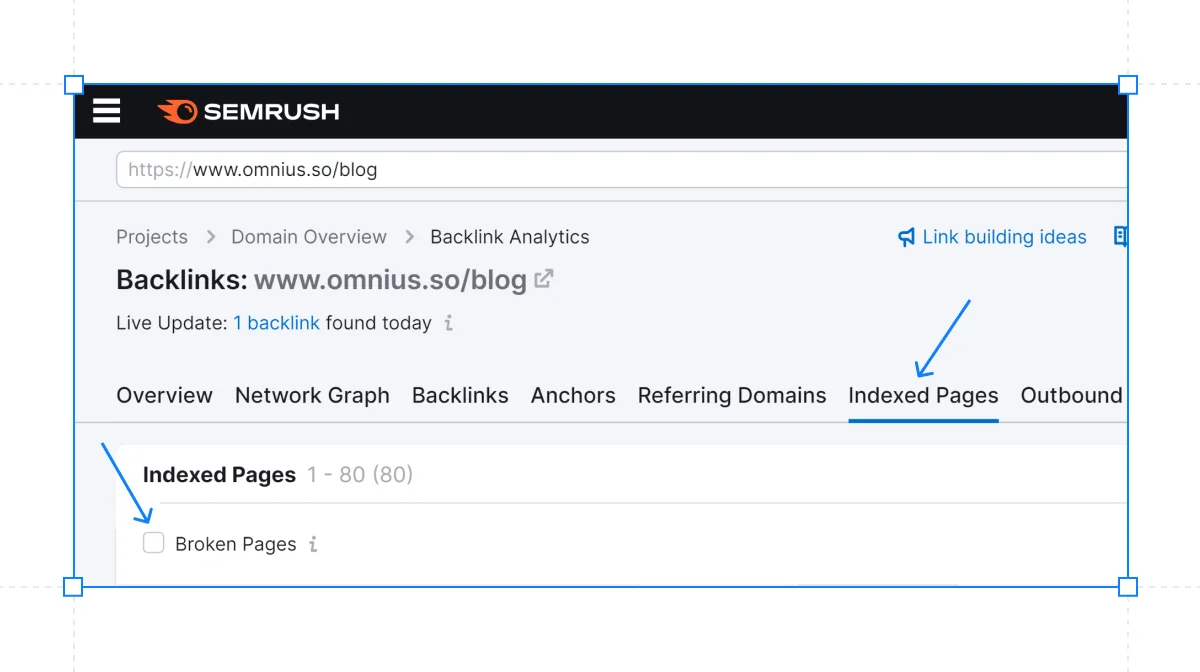
Check if you’ve covered similar topics on your site based on your search query.
If not, consider covering them if relevant.
Reach out to sites linking to those dead blogs, asking them to link to your posts instead.
Click the numbers in the “Domains” column to investigate the potential sites for backlinks further.
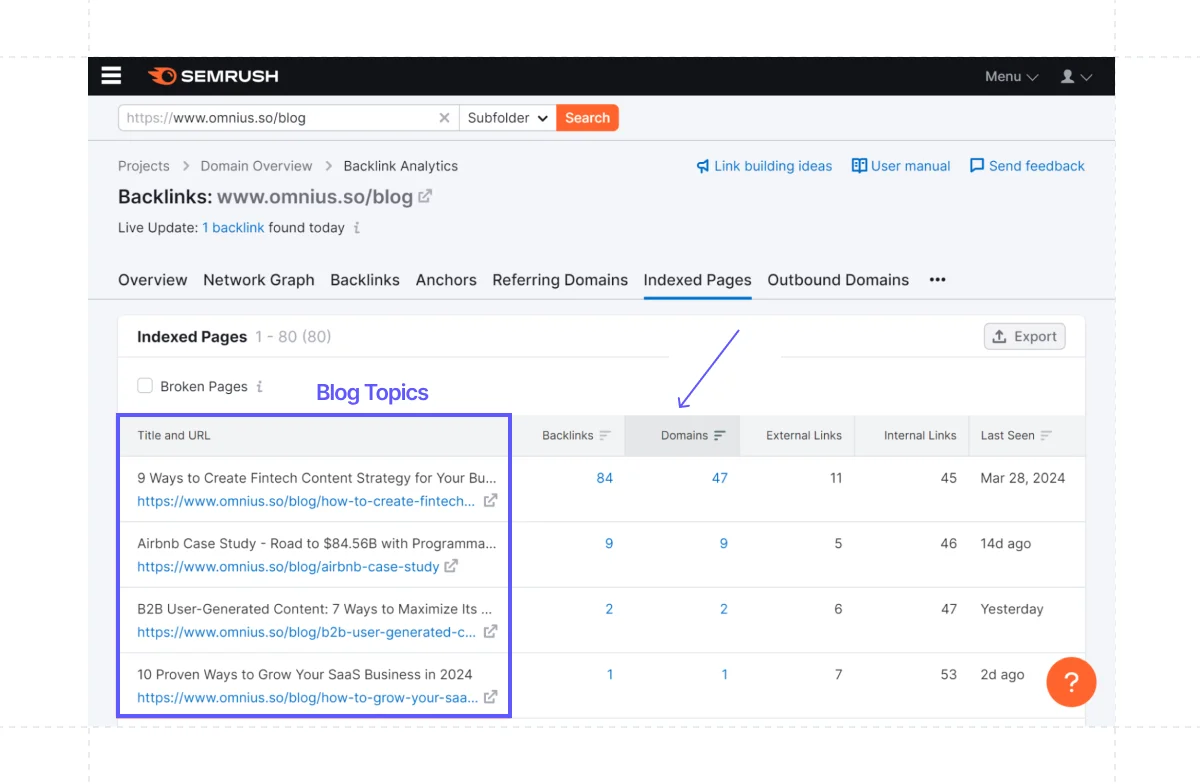
9. Distribute Internal Links
Internal links are those that lead to other pages on your website.
They are crucial for SEO as they distribute link equity, boosting the ranking of other content.
Make sure the anchor text is appropriate for the linked material.
The anchor text should contain descriptive keywords to accurately describe the page or idea you’re linking to.
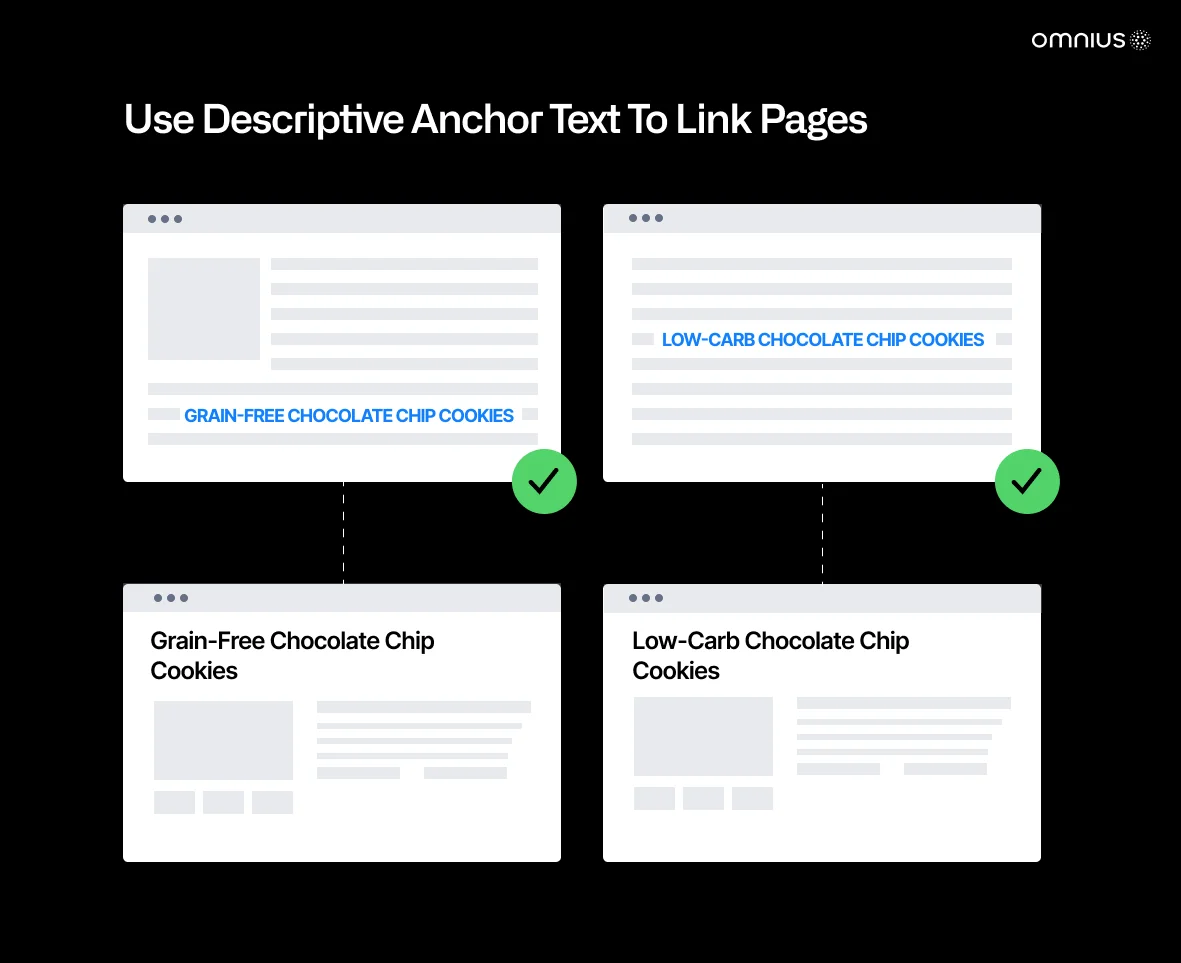
Note: Avoid adding them randomly. Only link where it naturally fits.
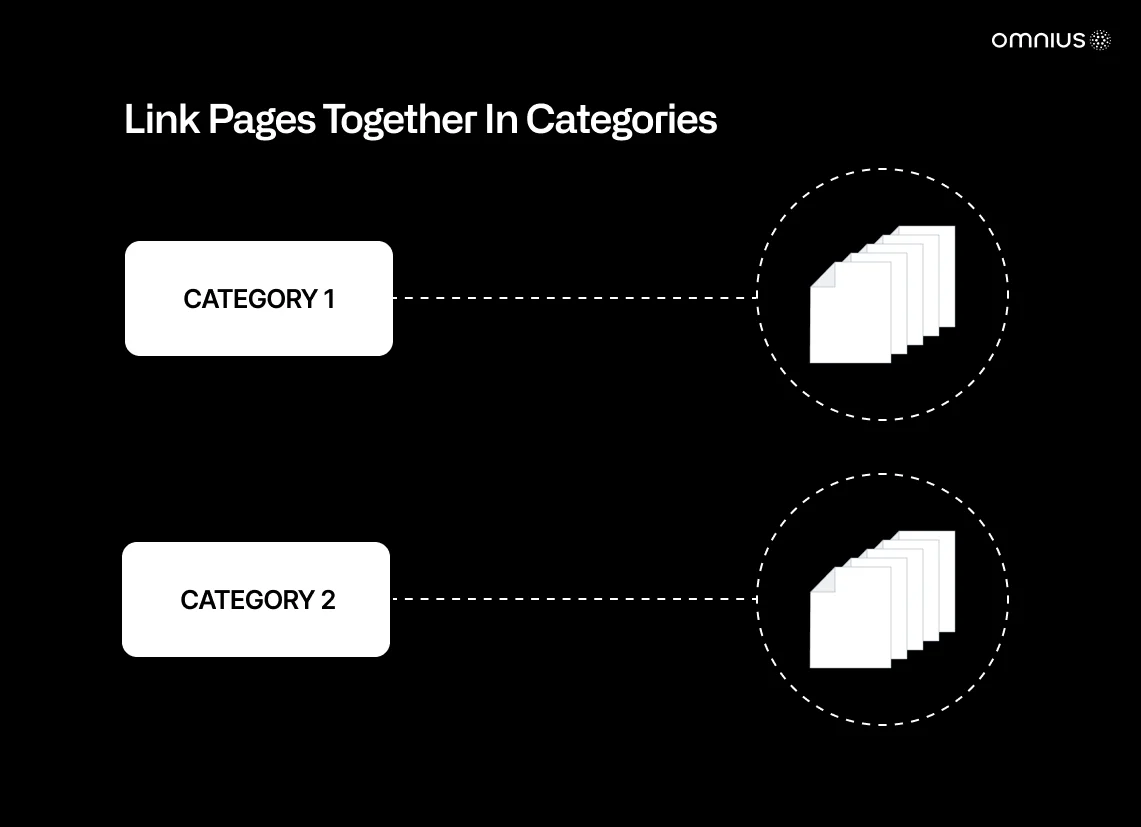
For instance, in an article about content writing checklist, you can link to related topic like:
In this example, ‘’Content writing checklist’’ is your keyword.
This link now provides additional information to readers and demonstrates your site’s authority to Google.
10. Update Outdated Content Regularly
Blog content becomes outdated over time.
To determine which material requires updating, use a Google Search Console or Google Analytics to examine the articles that are having any kind of decrease, whether conversions, traffic, impressions, etc.
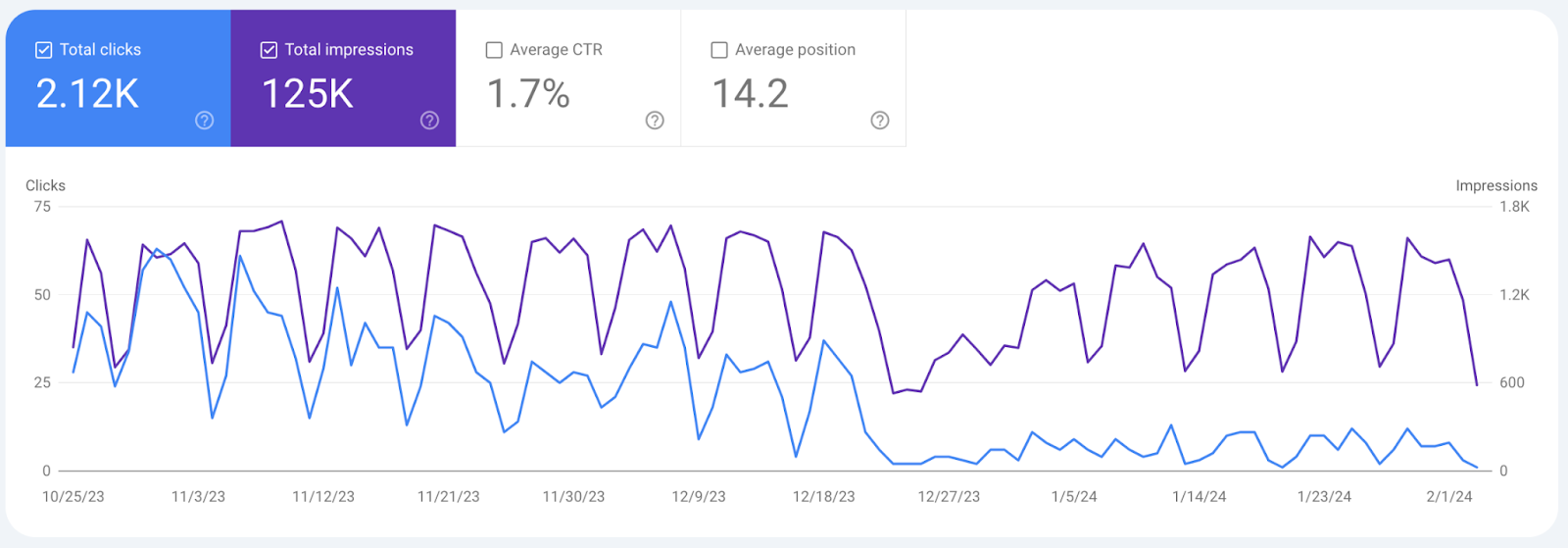
When upgrading content, consider the following best practices:
- Update outdated information and sources.
- Include actionable suggestions.
- Remove sections that are no longer relevant.
- Edit and revise with the search intent in mind.
Here’s how we increased the traffic for one of our clients drastically just by updating the outdated content.
These are the stats for only a single article(from 10 to 100+ daily clicks).
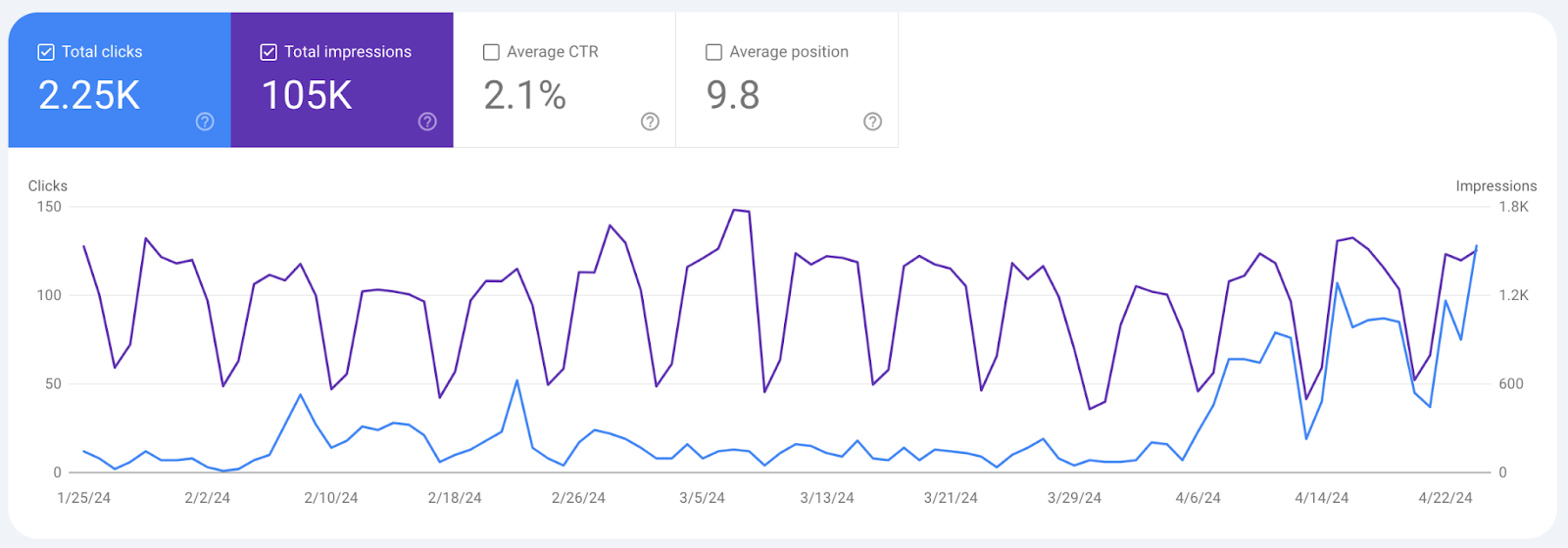
Imagine how this practice affects growth when you do it for 10s or 100s of articles.
11. Monitor Articles Regularly
Monitoring your articles regularly is the heart of your SEO strategy.
These are the common indicators you should watch for:
- Organic Traffic – Check for visitor volume, the channels they come from, the time they spend on the page, and what actions they take – like signing up for newsletters.
- Bounce Rate – If your content is not informative and engaging, visitors are likely not to stick around.
- Keyword Rankings – Optimize your on-page SEO. Improve your meta titles, subheadings, and descriptions by using your desired keywords.
- Click-Through Rate – Include schema markup to enhance Google search results with embedded features like rich snippets.
Final Thoughts
SEO article optimization means giving the best answer to a query in an easy-to-read format.
Follow the advice we’ve given, and your articles will rank well on Google if you apply each piece of advice.
Are you still unsure how to SEO optimize an article?
Omnius can assist you!
Schedule a free consultation, and let’s discuss how you can improve your traffic and lead generation through optimized articles!
Nguồn: omnius.so
